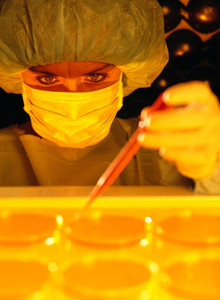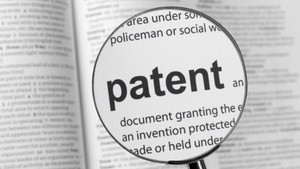In an attempt to improve public understanding, here is a glossary of the relevant terms for biosimilars and generics as defined by FDA.
| Term
|
FDA Definition
|
| Abbreviated new drug application (ANDA)
|
An ANDA contains data that, when submitted to FDA’s Center for Drug Evaluation and Research, Office of Generic Drugs, provides for the review and ultimate approval of a generic drug product. Generic drug applications are called ‘abbreviated’ because they are generally not required to include preclinical (animal) and clinical (human) data to establish safety and effectiveness. Instead, a generic applicant must scientifically demonstrate that its product is bioequivalent—i.e. performs in the same manner as the innovator drug. Once approved, an applicant may manufacture and market the generic drug product to provide a safe, effective, low cost alternative to the American public.
|
| Active ingredient
|
An active ingredient is any component that provides pharmacological activity or other direct effect in the diagnosis, cure, mitigation, treatment, or prevention of disease, or to affect the structure or any function of the body of man or animals.
|
| Biologic license application (BLA)
|
Biological products are approved for marketing under the provisions of the Public Health Service Act. The Act requires a firm who manufactures a biological for sale in interstate commerce to hold a license for the product. A biologicals license application is a submission that contains specific information on the manufacturing processes, chemistry, pharmacology, clinical pharmacology and the medical affects of the biological product. If the information provided meets FDA requirements, the application is approved and a license is issued allowing the firm to market the product.
|
| Biological product
|
Biological products include a wide range of products such as vaccines, blood and blood components, allergenics, somatic cells, gene therapy, tissues, and recombinant therapeutic proteins. Biologicals can be composed of sugars, proteins, or nucleic acids or complex combinations of these substances, or may be living entities such as cells and tissues. Biologicals are isolated from a variety of natural sources—human, animal, or microorganism—and may be produced by biotechnology methods and other cutting-edge technologies. Gene-based and cellular biologicals, for example, often are at the forefront of biomedical research, and may be used to treat a variety of medical conditions for which no other treatments are available. In general, the term ‘drugs’ includes therapeutic biological products.
|
| Bioavailability
|
The rate and extent to which the active ingredient or active moiety is absorbed from a drug product and becomes available at the site of action. For drug products that are not intended to be absorbed into the bloodstream, bioavailability may be assessed by measurements intended to reflect the rate and extent to which the active ingredient or active moiety becomes available at the site of action.
|
| Bioequivalence
|
The absence of a significant difference in the rate and extent to which the active ingredient or active moiety in pharmaceutical equivalents or pharmaceutical alternatives becomes available at the site of drug action when administered at the same molar dose under similar conditions in an appropriately designed study.
|
| Biosimilar
|
A biosimilar is a biological product that is highly similar to a US-licensed reference biological product notwithstanding minor differences in clinically inactive components, and for which there are no clinically meaningful differences between the biological product and the reference product in terms of the safety, purity, and potency of the product.
|
| Brand name (see proprietary name)
|
A word, name, symbol, etc., especially one legally registered as a trademark, used by a manufacturer to identify its products distinctively from others of the same type.
|
| Brand name drug
|
A brand name drug is a drug marketed under a proprietary, trademark-protected name.
|
| Chemical name
|
The name generated using the nomenclature conventions of the International Union of Pure and Applied Chemistry (IUPAC). Several correct names may be formulated using these rules but ordinarily the accepted chemical name will be the name listed by the Chemical Abstracts Service (CAS) and is conveniently located in the USAN dictionary.
|
| Drug
|
A drug is defined as:
- A substance recognised by an official pharmacopoeia or formulary.
- A substance intended for use in the diagnosis, cure, mitigation, treatment, or prevention of disease.
- A substance (other than food) intended to affect the structure or any function of the body.
- A substance intended for use as a component of of a medicine but not a device or a component, part or accessory of a device.
- Biological products are included within this definition and are generally covered by the same laws and regulations, but differences exist regarding their manufacturing processes (chemical process versus biological process).
|
| Drug product
|
The finished dosage form that contains a drug substance, generally, but not necessarily in association with other active or inactive ingredients.
|
| FDA
|
United States Food and Drug Administration.
|
| Generic name
|
An official or unofficial designation by which a drug is commonly available, unprotected by a trademark.
|
| Generic drug
|
A generic drug is the same as a brand name drug in dosage, safety, strength, how it is taken, quality, performance, and intended use. Before approving a generic drug product, FDA requires many rigorous tests and procedures to assure that the generic drug can be substituted for the brand name drug. The FDA bases evaluations of substitutability, or ‘therapeutic equivalence’, of generic drugs on scientific evaluations. By law, a generic drug product must contain the identical amounts of the same active ingredient(s) as the brand name product. Drug products evaluated as ‘therapeutically equivalent’ can be expected to have equal effect and no difference when substituted for the brand name product.
|
| INN (International non-proprietary name)
|
The international non-proprietary name designated by the WHO. Usually the USAN and INN name are identical. WHO only assigns names to active drug moieties.
|
| Non-proprietary name
|
A name unprotected by trademark rights that is entirely in the public domain. It may be used without restriction by the public at large, both lay and professional.
|
| OGD
|
Office of Generic Drugs
|
| Over-the-counter drugs (OTC)
|
FDA defines OTC drugs as safe and effective for use by the general public without a doctor's prescription.
|
| Patient package insert (PPI)
|
A patient package insert contains information for patients’ understanding of how to safely use a drug product.
|
| Paediatric exclusivity
|
As an incentive to industry to conduct studies requested by FDA, the Agency, under section 505(A), provides for a 6-month period of marketing exclusivity (paediatric exclusivity).
|
| PDUFA
|
Prescription Drug User Fee Act
|
| Pharmaceutical equivalents
|
FDA considers drug products to be pharmaceutical equivalents if they meet these three criteria:
- they contain the same active ingredient(s)
- they are of the same dosage form and route of administration
- they are identical in strength or concentration
Pharmaceutically equivalent drug products may differ in characteristics such as
- shape
- release mechanism
- labelling (to some extent)
- scoring
- excipients (including colours, flavours, preservatives).
|
| Prescription drug product
|
A prescription drug product requires a doctor’s authorisation to purchase.
|
| Proprietary name
|
The exclusive name of a drug substance or drug product owned by a company under trademark law regardless of registration status with the PTO.
|
| Route
|
A route of administration is a way of administering a drug to a site in a patient. A comprehensive list of specific routes of administration appears in the CDER Data Standards Manual.
|
| Tentative approval
|
If a generic drug product is ready for approval before the expiration of any patents or exclusivities accorded to the reference listed drug product, FDA issues a tentative approval letter to the applicant. The tentative approval letter details the circumstances associated with the tentative approval. FDA delays final approval of the generic drug product until all patent or exclusivity issues have been resolved. A tentative approval does not allow the applicant to market the generic drug product.
|
| Therapeutic biological product
|
A therapeutic biological product is a protein derived from living material (such as cells or tissues) used to treat or cure disease.
|
| Therapeutic equivalence (TE)
|
Drug products classified as therapeutically equivalent can be substituted with the full expectation that the substituted product will produce the same clinical effect and safety profile as the prescribed product. Drug products are considered to be therapeutically equivalent only if they meet these criteria:
- they are pharmaceutical equivalents (contain the same active ingredient(s); dosage form and route of administration; and strength).
- they are assigned by FDA the same therapeutic equivalence codes starting with the letter ‘A’. To receive a letter ‘A’, FDA
- designates a brand name drug or a generic drug to be the reference listed drug (RLD).
- assigns therapeutic equivalence codes based on data that a drug sponsor submits in an ANDA to scientifically demonstrate that its product is bioequivalent—i.e. performs in the same manner as the reference listed drug.
|
| USAN name
|
The official non-proprietary name published in the USP Dictionary of USAN and international drug names by the United States Adopted Names Council.
|
If you are interested in contributing a research article in a similar area to the GaBI Journal, please send us your submission via science@gabi-journal.net.
1. FDA. Drugs approvals and databases. Drugs@FDA glossary of terms. Available from: http://www.fda.gov/Drugs/InformationOnDrugs/ucm079436.html
 0
0











Post your comment